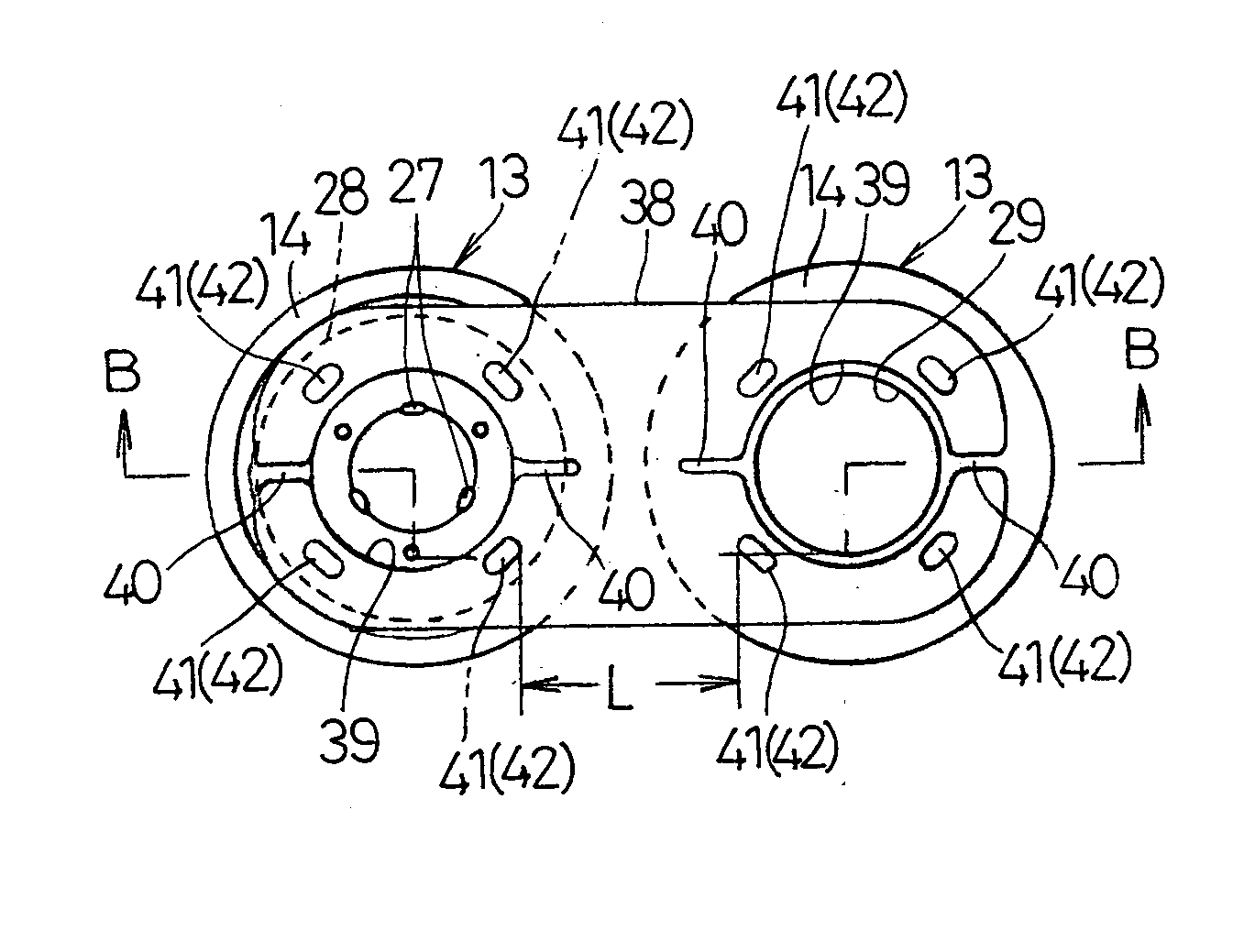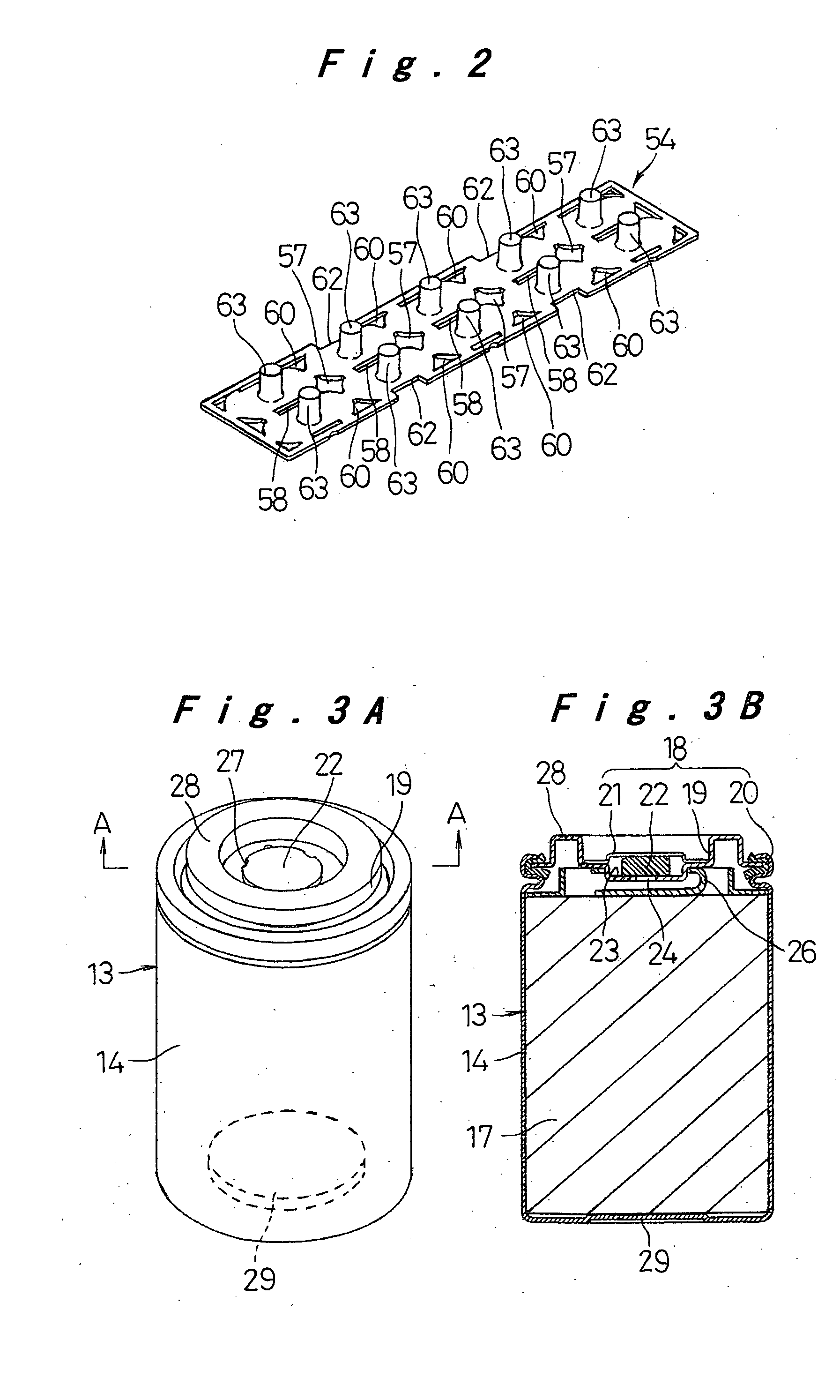Battery connection structure, battery module, and battery pack
a battery module and connection structure technology, applied in the direction of battery/fuel cell control arrangement, cell components, propulsion by batteries/cells, etc., can solve the problems of large welding time, difficult to manufacture the entire outer diameter, large length and parallelism, and poor productivity, so as to achieve easy coupling of battery modules to each other, high precision, and stable housing
- Summary
- Abstract
- Description
- Claims
- Application Information
AI Technical Summary
Benefits of technology
Problems solved by technology
Method used
Image
Examples
Embodiment Construction
[0039] Preferred embodiments of the present invention are described below, referring to the drawings. FIG. 1 is an exploded perspective view of a battery module 12 according to an embodiment of the present invention, showing the arrangement of components of the battery module 12. In this embodiment, an example is described in which twenty cylindrical cells 13 of the same type and the same standard are connected in series. The cell 13 is a nickel metal hydride battery, for example.
[0040] First, the structure of the cell 13 applied to the above battery module 12 is described. FIG. 3A is a perspective view of the cell 13 and FIG. 3B is a cross-sectional view thereof, taken along line IIIB-IIIB in FIG. 3A. A cell case 14 serving as a negative electrode has a cylindrical shape with a bottom which includes an opening at one end. In the cell case 14 are accommodated an electrode set 17 including an positive electrode plate and a negative electrode plate, that are well-known and are spiral...
PUM
| Property | Measurement | Unit |
|---|---|---|
| circumference | aaaaa | aaaaa |
| structure | aaaaa | aaaaa |
| shape | aaaaa | aaaaa |
Abstract
Description
Claims
Application Information
 Login to View More
Login to View More - R&D
- Intellectual Property
- Life Sciences
- Materials
- Tech Scout
- Unparalleled Data Quality
- Higher Quality Content
- 60% Fewer Hallucinations
Browse by: Latest US Patents, China's latest patents, Technical Efficacy Thesaurus, Application Domain, Technology Topic, Popular Technical Reports.
© 2025 PatSnap. All rights reserved.Legal|Privacy policy|Modern Slavery Act Transparency Statement|Sitemap|About US| Contact US: help@patsnap.com



